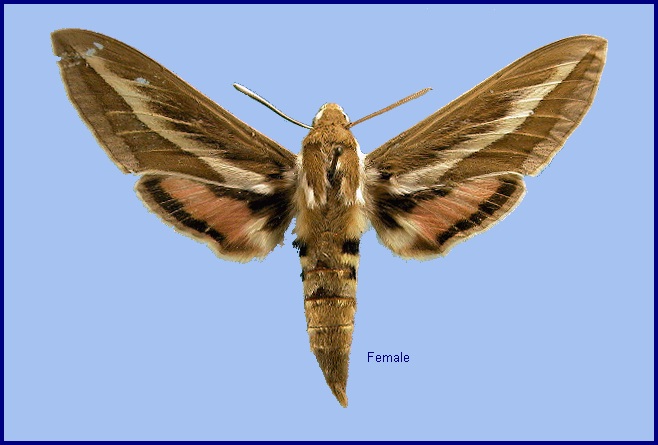
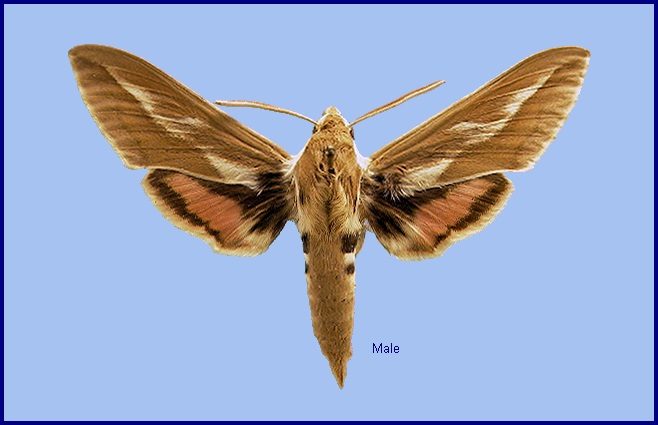
Sphinx zygophylli Ochsenheimer, 1808, Schmetterlinge Europa 2: 226. Type locality: Southern Russia [Turkestan].
Synonym. Sphinx zygophylli Ochsenheimer, 1808.
Synonym. Sphinx zygophylli Baron Marschall de Bieberstein, 1809.
Synonym. Celerio zygophylli jaxartis Froreich, 1938.
Synonym. Celerio zygophylli xanthoxyli Derzhavets, 1977, Nasekom. Mongol. 5: 647. Type locality: Mongolia, South Gobi Province, 60km west of Talin-Bilgekh-Bulak Spring.
Synonym. Hyles zygophylli kirgisa Eitschberger & Lukhtanov, 1996.
Note. In such a variable species, especially one which responds to local climatic conditions, the creation of separate taxa for pale individuals from the former Soviet Turkestan and Mongolia, is not justified.
Wingspan: 60--75mm. Forewing yellowish brown with a narrow, yellowish white, median stripe running from base of inner margin to apex, from which one or two branches extend towards costa; wing margin yellowish. Forewing much narrower than in related species. Similar to some forms of Hyles livornica. Variable in both colour intensity and size of markings; specimens from drier areas tend to be paler, with more yellow coloration.
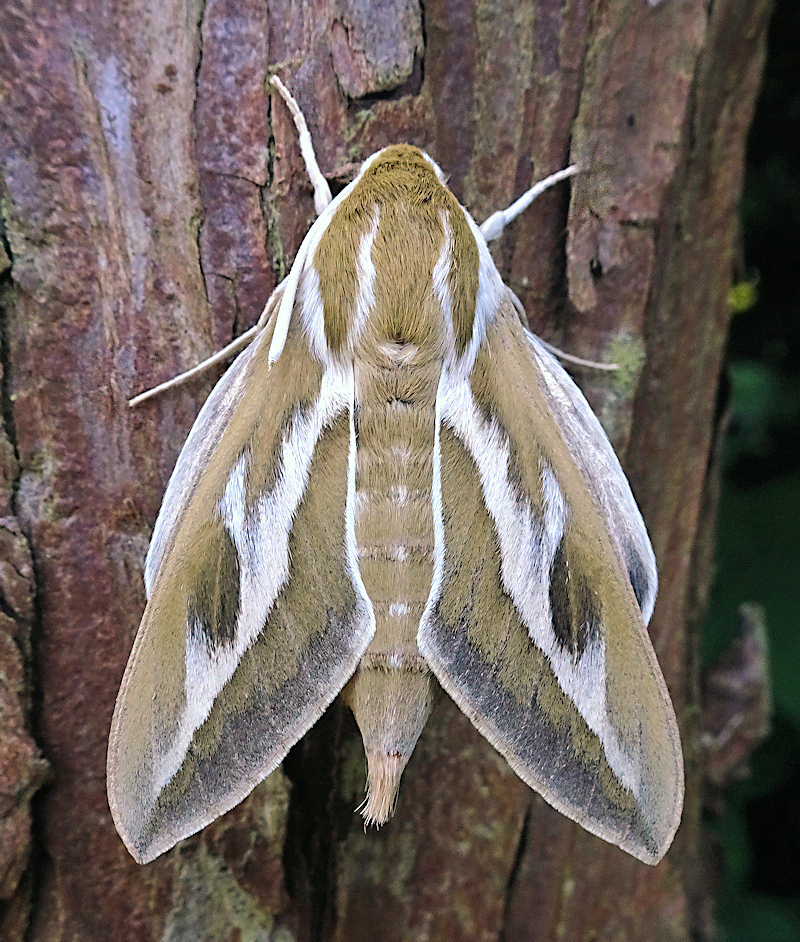
Riverine thickets with sunny shingle bars that support good growths of Zygophyllum in association with other plants are a favoured haunt in Xinjiang (Pittaway & Kitching, 2000).
The adults behave very like those of Smerinthus kindermannii, another typical arid zone species from the same region. In other words, males will often fly and pair during daylight, with the females usually pairing within 24 hours of emerging; the adults do not need to feed. Females emerge with large fully-formed eggs in them and start laying on the first night after pairing and, in captivity, will lay quite freely on the netting of the pairing cage.
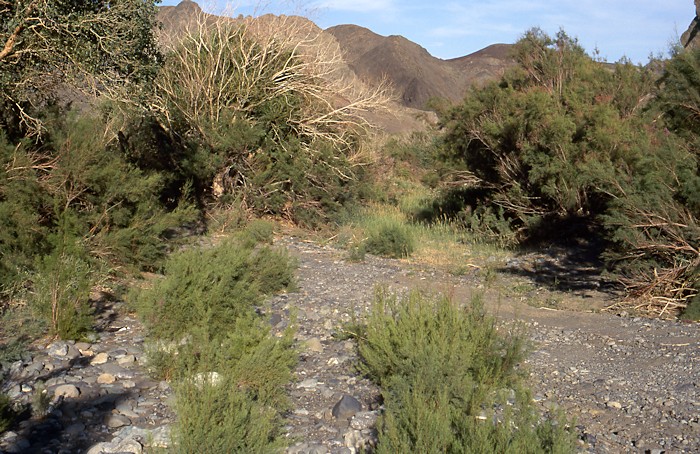
China: 5.v-20.vii (Shihezi); 20.ix (Shihezi). Mongolia: 28.v (Khovd Province); 6-10.vi (Gov'-Altai Province; Khovd Province); 6.vii-17.viii (Ömnögov' Province; Khovd Province; Gov'-Altai Province). Russia: 10-28.vi (Selenga River, Buryatia).
OVUM: Larger than most species of Hyles, spherical (about 1.1 mm in diameter), milky blue-green. Laid on the underside of a leaf, hatching from two to five days later.
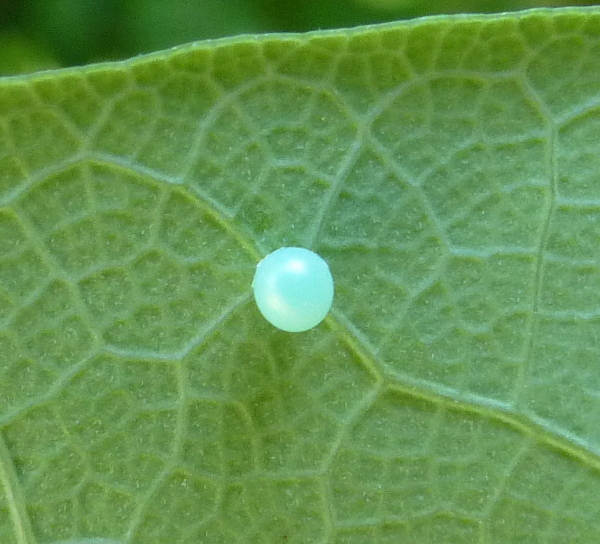
LARVA: Full-fed 70--80mm. Polychromatic. Unfed first instar larvae are uniform pale greenish-yellow with a dark horn (Emami, Karimpour & Lotafalizadeh, 2021). Fully grown, primarily pale green or yellow, with a black reticulate pattern dorsally and laterally; ventro-lateral and lateral surface unmarked. A narrow yellow dorso-lateral band with small black-ringed yellow or white eye-spots of variable size. In some the head, dorsal line, horn and anal claspers are black; in others they are yellow or pale green. All forms have a yellow band beneath the orange or white spiracles.
On hatching, the larva takes up a position along the midrib on the lower surface of the leaf. During later stages, most feed fully exposed, clinging to a stem while avidly consuming leaves and flowers. From egg to pupa takes approximately 30 days.
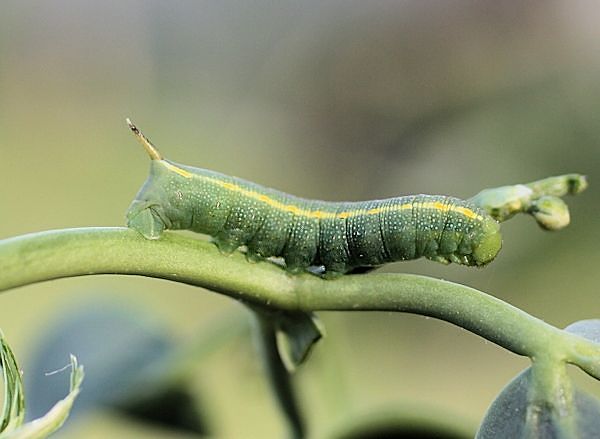
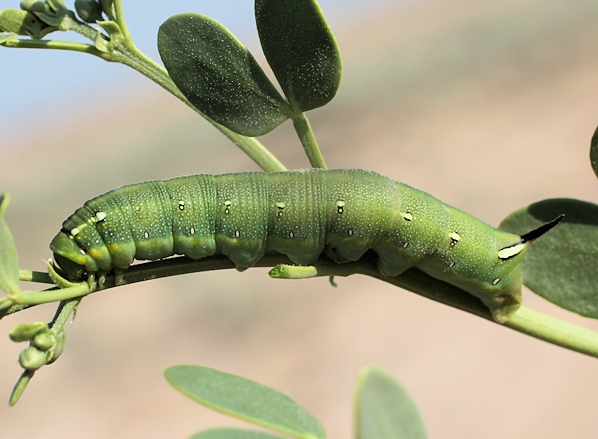
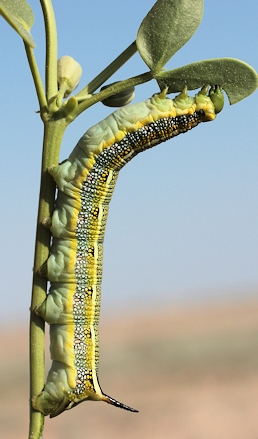
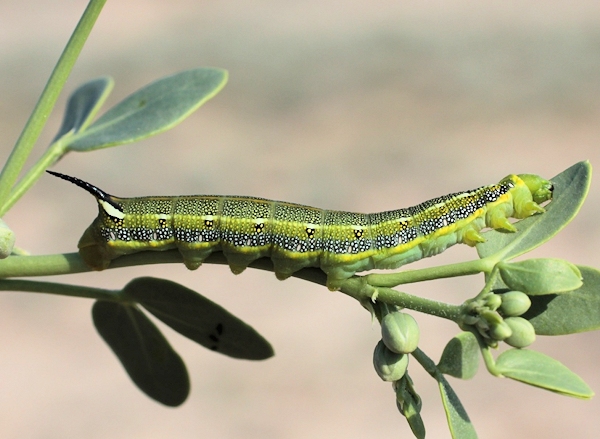
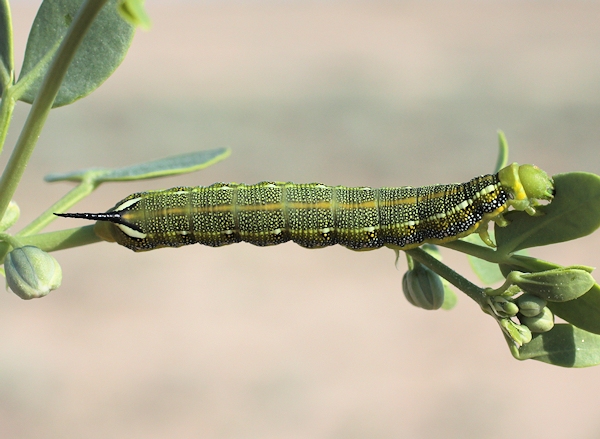
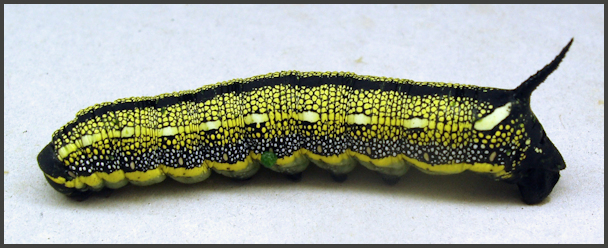
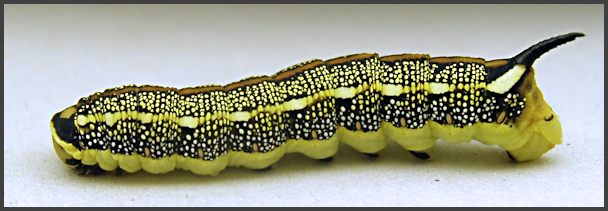
PUPA: 40--50mm. Light, sandy brown, with fine dark lines. In summer, this stage lasts no more than eighteen days. Overwinters as a pupa.
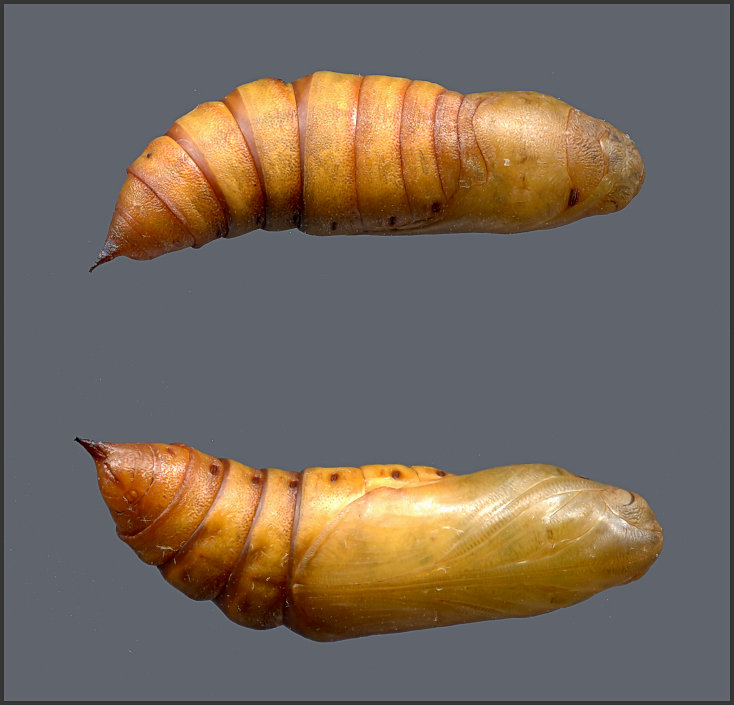
Larval hostplants. Monophagous in China on Zygophyllum (Pittaway & Kitching, 2000). This is also the hostplant in Turkey (Boisduval, [1875]), Tajikistan (Shchetkin, 1956), Turkmenistan (Mitroshina, 1989) and Mongolia (Zagorinskiy, Gorbunov & Puntsagdulam, 2010), while another genus of Zygophyllaceae, Tribulus, is accepted in captivity (Pittaway, 1993). Pittaway (1993) also suggested that Hyles zygophylli might feed on the flower heads of Eremurus (Asphodelaceae) but gave no evidence to support this conjecture.
Unknown for the region.
China: Xinjiang (Jinghe, near Yining; Shihezi; Turpan; Xiaerxili Natural Reserve, near Bole City, Bortala Mongol Autonomous Prefecture; Changji Hui; Orku City); Shaanxi; Gansu (Mogao Caves).
Mongolia: Khovd Province (Dzhungarian Gobi, 45km SW Bulgan, Uvhod-Ula Mt., 1350m; Bodonchiyn River valley, Elkhony-Ekhen-Tal, 30km S Altai village, 1200m (45°43'N 92°05'E); Bodonchiyn River basin, Hundiyn River valley, 1600m (46°06'N 92°30'E); Bulgan River basin, Bayan river valley, Ulyastayn-Sala river, 1900m (46°21'N 91°08'E)); Ömnögov' Province (60km west of Talin-Bilgekh-Bulak Spring; Gurvantes); Gov'-Altai Province (Tsogt; Zahuin Gov' Desert, near Tahilt (45°01'N 96°28'E); Dzhungarian Gobi, 15-20km N Alag-Nuur [lake], Takhajchin River valley, 1300m (45°19'N 94°28'E)).
Russia: Buryatia (30 km NW of Kyachta, Selenga River valley, 1100-1200m).
Recorded from western Turkey (Danner et al., 1998) and the lower Volga valley, Russia, east through northern Syria, the Caucasus, northern Iran, Turkmenistan, most of Kazakhstan, Uzbekistan, Tajikistan to northern Afghanistan (Pittaway, 1993). Then northeast through Kyrgyzstan (Eitschberger & Lukhtanov, 1996, as 'Hyles zygophylli kirgisa') to Xinjiang and Shaanxi Province, China (Alphéraky, 1889; Eitschberger, 1999; Pittaway & Kitching, 2000), southern Mongolia (Derzhavets, 1977; Saldaitis & Ivinskis, 2006; Yakovlev, Gus'kova, Doroshkin & Titov, 2015; Knyazev, Makhov, Matov & Yakovlev; 2020; Makhov, Matov & Lukhanov, 2024) and Buryatia, Russia. Found throughout Xinjiang wherever Zygophyllum is present (Pittaway & Kitching, 2000).
The records from the Selenga River valley, Buryatia, Russia (Pascal Régnier, pers. comm. 2012), may represent a relict/isolated population as the nearest known records for this species are from southern Mongolia.
There is one record of a vagrant from Croatia (a specimen in the Carnegie Museum, labelled 'Dalmatia' (Ian Kitching, pers. comm. 2005)). Via vagrants, this species may colonize Romania in the future, where Zygophyllum fabago has become quite widespread (König, 2003).
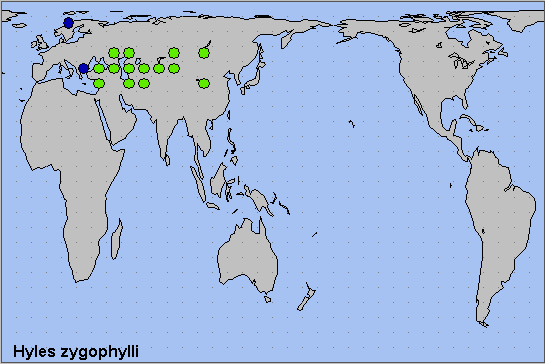
Holarctic; western Palaearctic region. Pleistocene refuge: Polycentric -- Turanoeremic and Mongoloeremic refugia.
 Return to Sphingidae of the Eastern Palaearctic species list
Return to Sphingidae of the Eastern Palaearctic species list